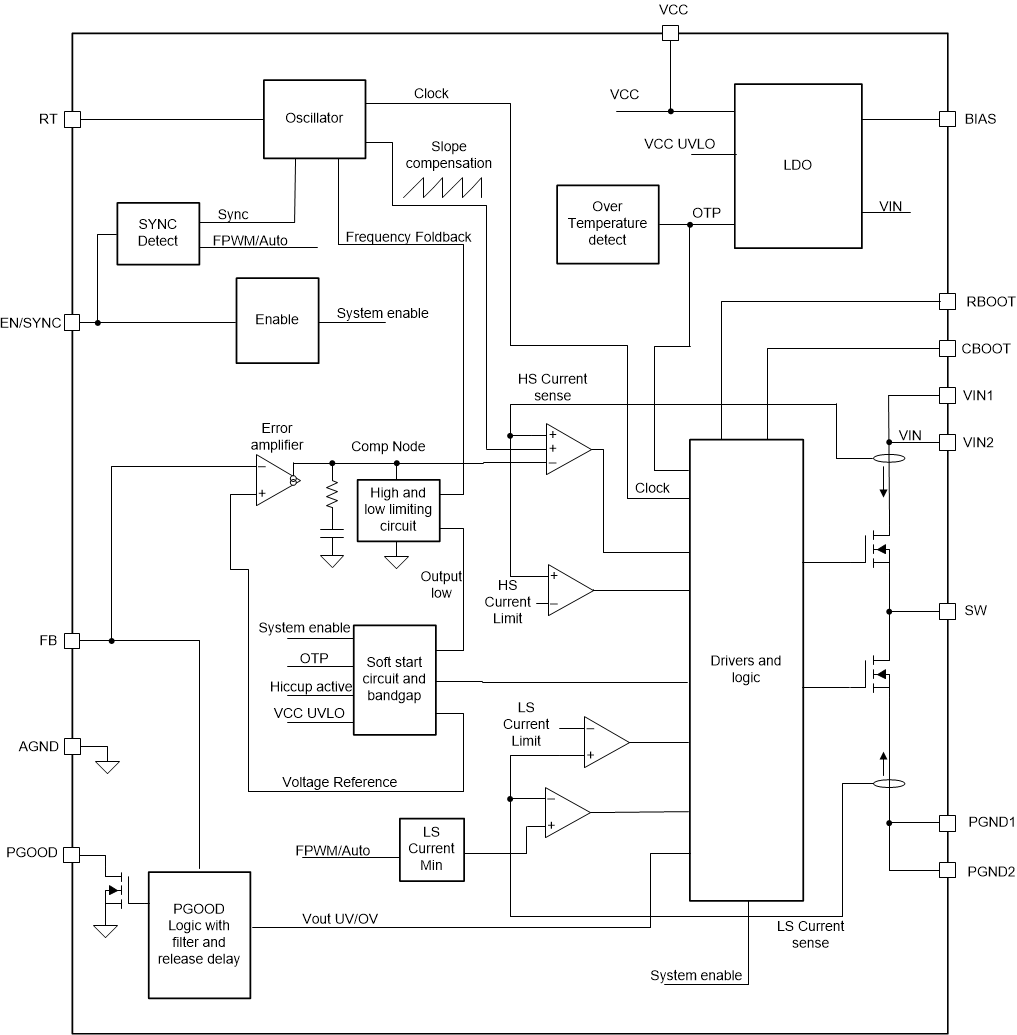-
LM61430-Q1, LM61435-Q1, LM61440-Q1, and LM61460-Q1 Functional Safety FIT Rate, FMD and Pin FMA SNVA920B January 2020 – September 2021 LM61430-Q1 , LM61435-Q1 , LM61440-Q1 , LM61460-Q1
-
LM61430-Q1, LM61435-Q1, LM61440-Q1, and LM61460-Q1 Functional Safety FIT Rate, FMD and Pin FMA
LM61430-Q1, LM61435-Q1, LM61440-Q1, and LM61460-Q1 Functional Safety FIT Rate, FMD and Pin FMA
1 Overview
This document contains information for LM61430-Q1, LM61435-Q1, LM61440-Q1, and LM61460-Q1 (VQFN-HR package) to aid in a functional safety system design. Information provided are:
- Functional Safety Failure In Time (FIT) rates of the semiconductor component estimated by the application of industry reliability standards
- Component failure modes and their distribution (FMD) based on the primary function of the device
- Pin failure mode analysis (Pin FMA)
Figure 1-1 shows the device functional block diagram for reference.
 Figure 1-1 Functional Block
Diagram
Figure 1-1 Functional Block
DiagramLM61430-Q1, LM61435-Q1, LM61440-Q1, and LM61460-Q1 was developed using a quality-managed development process, but was not developed in accordance with the IEC 61508 or ISO 26262 standards.
2 Functional Safety Failure In Time (FIT) Rates
This section provides Functional Safety Failure In Time (FIT) rates for LM61430-Q1, LM61435-Q1, LM61440-Q1, and LM61460-Q1 based on two different industry-wide used reliability standards:
- Table 2-1 provides FIT rates based on IEC TR 62380 / ISO 26262 part 11
- Table 2-2 provides FIT rates based on the Siemens Norm SN 29500-2
| FIT IEC TR 62380 / ISO 26262 | FIT (Failures Per 109 Hours) |
|---|---|
| Total Component FIT Rate | 17 |
| Die FIT Rate | 9 |
| Package FIT Rate | 8 |
The failure rate and mission profile information in Table 2-1 comes from the Reliability data handbook IEC TR 62380 / ISO 26262 part 11:
- Mission Profile: Motor Control from Table 11
- Power dissipation: 600mW
- Climate type: World-wide Table 8
- Package factor (lambda 3): Table 17b
- Substrate Material: FR4
- EOS FIT rate assumed: 0 FIT
| Table | Category | Reference FIT Rate | Reference Virtual TJ |
|---|---|---|---|
| 5 | CMOS, BiPolar | 25 FIT | 55°C |
The Reference FIT Rate and Reference Virtual TJ (junction temperature) in Table 2-2 come from the Siemens Norm SN 29500-2 tables 1 through 5. Failure rates under operating conditions are calculated from the reference failure rate and virtual junction temperature using conversion information in SN 29500-2 section 4.